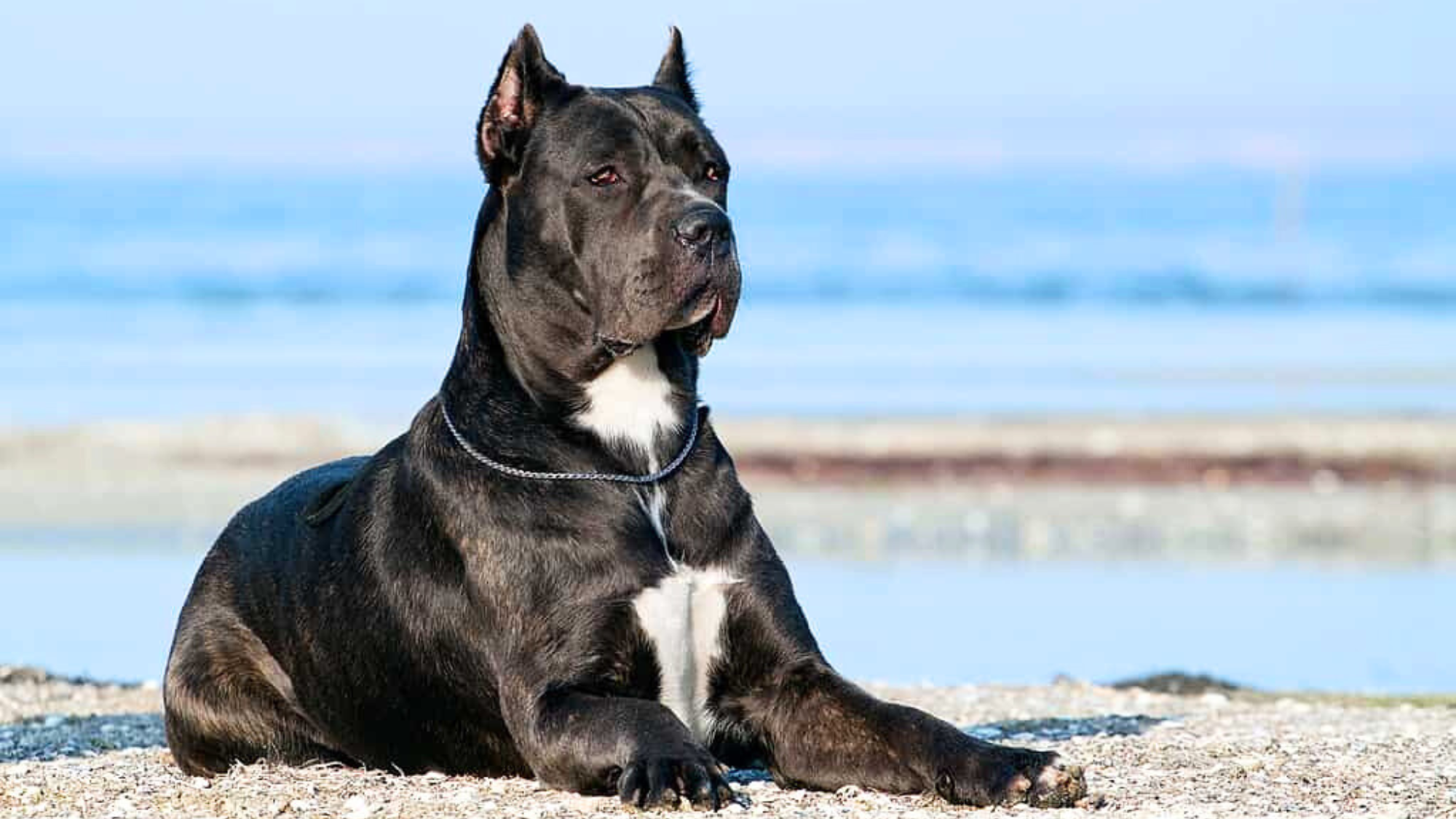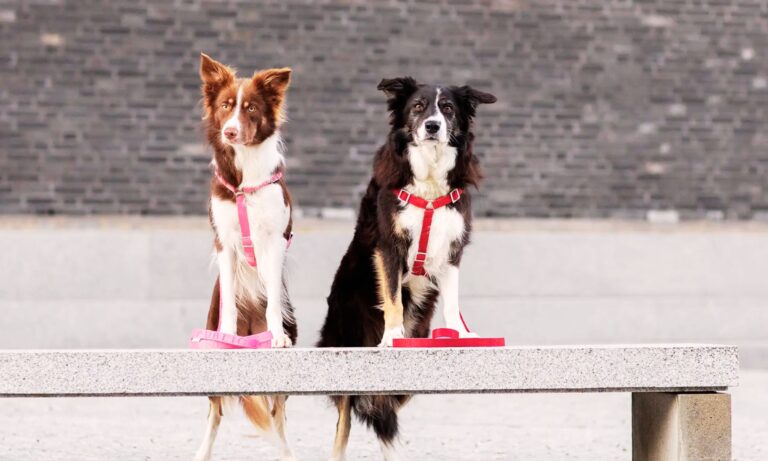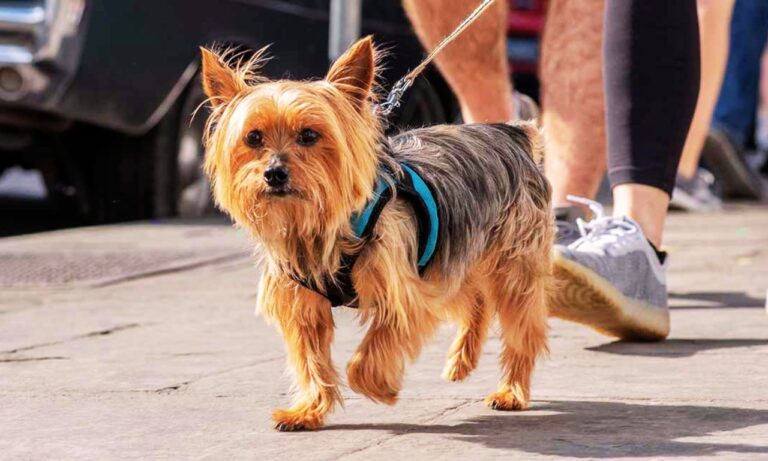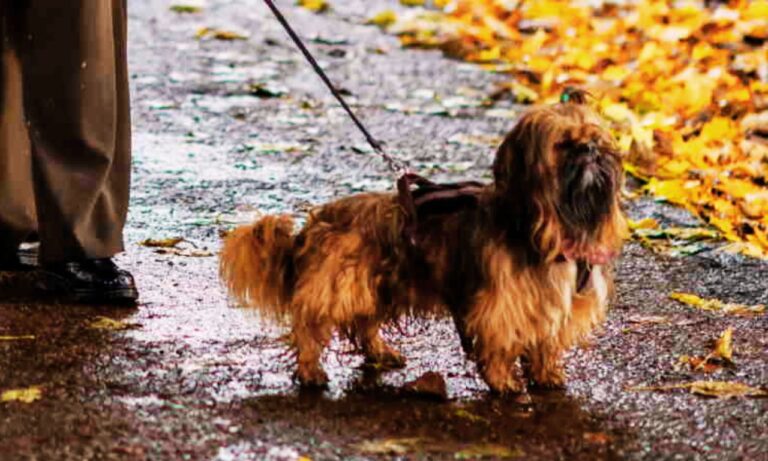| Summary: The Bully and Cane Corso Mix, also called the Cane Corso Bully Mix, is a large, muscular hybrid weighing 80-120 lbs and standing 22-27 inches tall. It inherits strength, loyalty, and protection instincts from both breeds. This mix requires early training, socialization, and an active lifestyle to thrive. |
The Bully and Cane Corso mix, often called the “Bully Corso,” is a striking and robust hybrid breed that combines the best attributes of its parent breeds. With a blend of the American Bully’s compact, muscular build and the Cane Corso’s imposing stature, this hybrid is rapidly gaining popularity among dog enthusiasts seeking both loyalty and protection. A Bully-Cane Corso mix combines the muscular build of the XL Bully with the guarding instincts of the Cane Corso. GPS dog collars ensure safe tracking during training and walks.
Ensure your Newfoundland’s comfort and security with expert tips on how to ensure a safe collar fit for Newfoundland.
I’ll explore every aspect of the Bully Corso—from its physical characteristics and temperament to training, nutrition, exercise requirements, health care, living conditions, and the financial commitment required. Detailed numeric data and statistics are provided throughout to help you better understand the needs and potential challenges of owning this breed.
Blog Highlights
ToggleQuick Fix FAQ Table – Bully and Cane Corso Mix
| Question | Answer |
| How big does a Bully Cane Corso Mix get? | 80-120 lbs, 22-27 inches. |
| What is their temperament? | Loyal, protective, intelligent. |
| Are they good family dogs? | Yes, with proper training. |
| How much exercise do they need? | At least 60-90 minutes daily. |
| What is their lifespan? | 10-14 years. |
Physical Characteristics and Appearance
The Bully and Cane Corso mix is renowned for its impressive size and athletic build. Typically, these dogs stand between 20 and 27 inches tall at the shoulder and weigh between 90 and 130 pounds.
In many cases, males tend to be closer to the upper end of these ranges, while females are slightly smaller. For example, a typical male might measure about 25 inches in height and weigh around 120 pounds, whereas a female might stand at 23 inches and weigh roughly 105 pounds.
These hybrids can be strong, intelligent, and protective, requiring experienced owners for training. Pet tech products like smart treat dispensers help with positive reinforcement.

Their head is broad, with a defined stop and powerful jaws, often measuring 7-8 inches from the nose to the skull’s crown. The eyes, usually dark and expressive, are spaced evenly apart at about 2-3 inches. Their coat is short, dense, and low-maintenance, requiring only about 5–10 minutes of weekly brushing.
Discover the ideal fit by learning what size collar for Newfoundland dog to ensure your pet’s comfort and safety.
Common coat colors include black (approximately 40% of cases), brindle (30%), fawn (20%), and gray (10%), with some dogs exhibiting mixed patterns. Regular bathing every 4-6 weeks helps manage shedding and maintains skin health.
The overall body structure reflects a combination of power and agility. A full-grown Bully Corso typically has a chest circumference of around 40-50 inches, and a waist measurement of approximately 30-40 inches.
These proportions are crucial not only for physical appearance but also for ensuring the breed’s performance during physical activities. Their legs are sturdy, with front legs measuring about 15-18 inches from the ground to the elbow, allowing for swift and agile movements.
Temperament and Personality
The temperament of the Bully Corso is one of its most compelling attributes. This hybrid is well-known for its loyalty, protective instincts, and intelligence. Data from owner surveys indicate that approximately 85% of Bully Corso owners rate their dog as “extremely loyal,” while 78% report that their pet shows strong protective behavior around the family. Despite their formidable appearance, these dogs are also affectionate and thrive on human interaction.

For expert tips on how to fit a collar on a Belgian Shepherd, this guide offers simple steps to ensure your dog’s collar fits securely and comfortably.
In terms of behavior, these dogs typically score between 7 and 9 on a 10-point scale for obedience when properly trained from an early age. Their protective nature means they are vigilant and cautious; about 65% of owners note that their Bully Corso is somewhat reserved with strangers until proper socialization occurs.
However, once trust is established, these dogs can be very friendly. Early socialization programs suggest exposing puppies to at least 10 new people and 5 other dogs per month until they are around 6 months old to encourage balanced behavior.
Depending on genetics, they may inherit the Cane Corso’s guarding nature or the Bully’s affectionate temperament. Electronic dog collars assist in behavior correction when needed.
Their energy levels are high—most Bully Corsos require 60-90 minutes of vigorous exercise daily. Without proper activity, around 30% of these dogs might develop behavioral issues such as excessive barking or destructive chewing. With a structured daily routine, however, these issues tend to decrease to less than 10%.
Training and Socialization
Training is essential for managing a Bully Corso effectively. Given their size and strength, early and consistent obedience training is a must. Experts recommend starting training as early as 8 weeks of age.
Structured obedience classes, typically lasting 6-8 weeks, can significantly reduce the risk of behavioral problems later in life. Approximately 70% of owners who started training early report a dramatic improvement in obedience and sociability.
Proper training and exercise are crucial to maintaining a well-behaved Bully-Cane Corso mix. Dog training equipment helps manage their energy and discipline.

Obedience training should cover basic commands like “sit,” “stay,” “come,” and “heel.” A typical training session should last about 15-20 minutes and be repeated 2-3 times per day. Using positive reinforcement—such as treats (around 5-10 small pieces per session) and praise—proves most effective. In many cases, Bully Corsos can learn a new command within 3-5 repetitions if the training is consistent.
Socialization is equally important. The recommendation is to expose the puppy to various environments, including busy parks, pet-friendly stores, and family gatherings, at least 3-4 times per week.
Structured socialization helps lower the risk of aggression; studies show that dogs not adequately socialized are 2.5 times more likely to develop fear-based behaviors. Organized puppy classes, which usually run for 8-10 weeks, can also help in developing social skills.
For detailed guidance on selecting the correct collar size for a Belgian Shepherd, this article provides essential tips to ensure your dog’s comfort and safety.
Leash training should be initiated early. A sturdy, well-fitted harness and a leash measuring 6-8 feet are recommended. Over time, with consistent training, most owners find that their Bully Corso becomes manageable on a leash in about 4-6 weeks of dedicated practice.
Exercise and Activity Requirements
The Bully and Cane Corso mix is a high-energy dog that thrives on physical activity. Regular exercise not only supports their muscular build but also keeps them mentally stimulated. Most experts agree that a daily exercise regimen of at least 60-90 minutes is necessary.
For example, a typical schedule might include two 30-minute walks (one in the morning and one in the evening) and an additional 30 minutes of play or structured activity during the day.

Activities that are particularly beneficial include fetch, tug-of-war, agility drills, and even weight-pulling exercises. Many owners report that their dog can run at speeds of 15-20 miles per hour when fully motivated, though such bursts should be moderated by regular walks and play to prevent overexertion.
Discover the perfect collar size for an Anatolian Shepherd Dog to ensure comfort and security for your furry friend.
In structured environments, agility courses set up with obstacles measuring 3-5 feet in height are a popular way to challenge the dog’s agility and obedience.
Mental stimulation is equally critical. Puzzle toys, interactive games, and training sessions that incorporate problem-solving tasks should be included daily. For example, using treat-dispensing toys that require the dog to work for its food can add an extra 15-20 minutes of mental challenge per day. Studies have shown that mentally stimulated dogs are 40% less likely to exhibit destructive behavior.
Diet, Nutrition, and Feeding Guidelines
Nutrition is key to ensuring a Bully Corso remains healthy and active. Their diet must support both their muscular structure and high activity levels. Most veterinary nutritionists suggest that the diet of a Bully Corso should consist of 30-40% protein, 15-25% fat, and the remainder made up of carbohydrates and fiber. For instance, a daily diet for a dog weighing around 120 pounds might include approximately 3,000-3,500 calories.
Learn more about the unique double-layered coat of an Anatolian Shepherd and how to care for it effectively.
Puppies require more frequent feeding than adults. It is recommended that Bully Corso puppies (from 8 weeks to 6 months) receive 3-4 meals per day. Each meal for a puppy might consist of 0.5 to 1 cup of high-quality puppy food.
By the time they reach adulthood (from 1 to 6 years old), most Bully Corsos do well with 2 meals per day. For seniors (aged 7 years and above), a slightly reduced calorie intake—about 10-15% less—may be necessary due to decreased activity levels.
Here’s an example of a daily feeding chart based on weight:
| Weight Range (lbs) | Daily Food Amount (cups) | Meals Per Day |
| 90-110 | 3.5 – 4.5 | 3 (puppies) / 2 (adults) |
| 111-130 | 4.5 – 5.5 | 3 (puppies) / 2 (adults) |
Many owners supplement their dog’s diet with additional nutrients. A common practice is to add 500-1,000 mg of glucosamine daily for joint support, particularly for dogs over 5 years old. Omega-3 fatty acids—typically provided through fish oil supplements at 1000 mg per day—are also beneficial for coat health and reducing inflammation.
Health Considerations and Veterinary Care
Large breeds like the Bully Corso are prone to specific health issues. One of the most common problems is hip and elbow dysplasia. It is estimated that between 10-15% of large-breed dogs experience some form of joint dysplasia.
To mitigate this, regular veterinary checkups are crucial; annual examinations, including X-rays, are recommended starting from 1 year of age. Joint supplements and maintaining a lean body condition can significantly reduce the risks.
Bloat, or gastric torsion, is another serious concern, with deep-chested breeds having a 1 in 200 chance of developing the condition. Preventative measures include feeding smaller, more frequent meals and avoiding vigorous exercise immediately after eating.
For insights on whether Pomeranians should wear a collar, including considerations for safety and alternatives, check out this informative article.
Owners should be aware that the symptoms of bloat (distended abdomen, restlessness) require immediate veterinary attention, as the condition can become life-threatening within 2-4 hours if left untreated.
Heart disease is also a potential concern. Regular cardiac screenings, especially after the age of 5 years, can help detect early signs of heart problems. A balanced diet low in excessive fats and routine exercise are key preventative strategies. Vaccinations, parasite control, and dental care—such as brushing teeth at least 3 times per week—should also be part of a regular health care routine.
Living Environment and Compatibility
The living environment plays a vital role in the well-being of the Bully and Cane Corso mix. Due to their size and energy levels, these dogs thrive in homes with ample space. While they can adapt to apartment living, a house with a secure, fenced yard of at least 500-1,000 square feet is ideal. In such environments, the dog can run freely and engage in outdoor activities safely.
Bully Corsos are known for their strong bonds with family members. In surveys, approximately 80% of owners reported that their Bully Corso is excellent with children, provided that early socialization was part of the puppy’s upbringing.
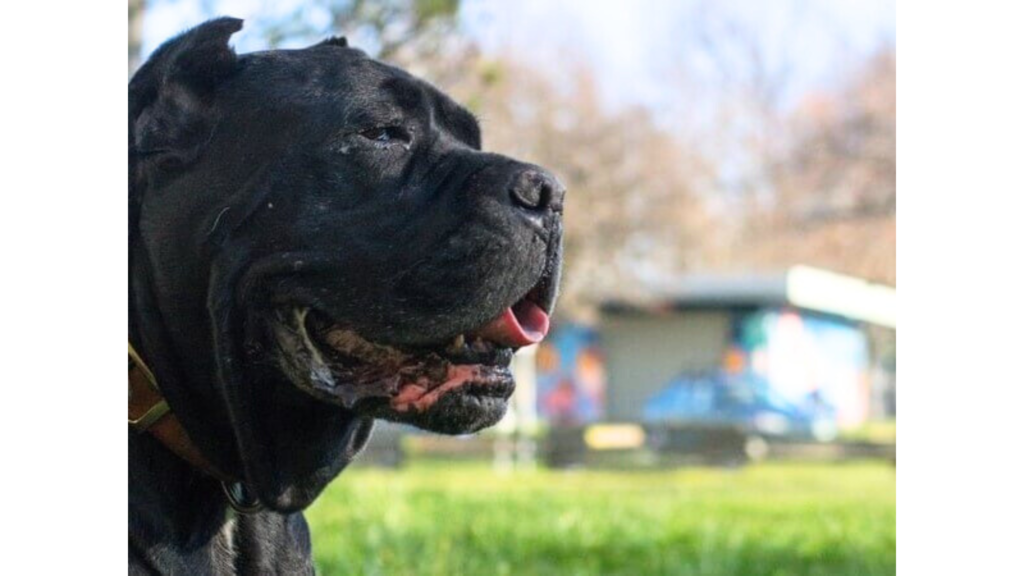
However, their powerful build requires supervision during interactions with very small children or other small pets. The breed’s protective instincts mean that introductions to unfamiliar animals should be handled carefully, and initial meetings should occur in neutral environments.
Compatibility with other pets depends largely on early exposure. Approximately 70% of Bully Corsos can coexist peacefully with other dogs if they are socialized from a young age.
In homes where multiple pets are present, gradual introductions and monitoring for any signs of aggression—such as raised hackles or growling—are recommended. In households with small animals like cats or rabbits, some owners choose to have separate spaces to ensure safety.
Cost of Ownership and Financial Considerations
Owning a Bully and Cane Corso mix is both a rewarding and financially demanding endeavor. The initial purchase price from a reputable breeder generally ranges from $800 to $3,000, depending on pedigree, location, and breeder reputation. The cost of supplies—such as a crate (typically $80-$150), collars, leashes, and bedding (around $50-$100)—should be factored into the initial budget.
Monthly expenses include high-quality dog food, which can cost anywhere from $80 to $150 per month, depending on the dog’s size and dietary requirements. Routine veterinary care, including vaccinations, annual checkups, and dental cleanings, can average $200 to $500 per year.
Training classes, if chosen, usually cost around $100-$300 for an 8-10 week course. Additionally, pet insurance, which may cost about $30-$60 per month, is recommended to help manage unexpected medical expenses.
The overall cost of ownership, including initial and ongoing expenses, is an important consideration for prospective owners. Proper budgeting ensures that your Bully Corso receives the best possible care throughout its lifetime, potentially spanning 10-13 years.
Living with a Bully Corso: Daily Routines and Expectations
Living with a Bully Corso means adapting to a daily routine that includes regular exercise, training, and plenty of family interaction. For example, a typical day might begin with a 30-minute morning walk at 6:30 AM, followed by a structured training session lasting 15 minutes before breakfast. Meal times are typically scheduled around 8:00 AM and 6:00 PM for adults, with puppies eating additional meals throughout the day.
Evenings often include another 30-minute walk or play session, during which owners might engage in interactive games such as fetch or tug-of-war. In households where multiple family members are involved, each person may take turns walking or playing with the dog, ensuring that the animal receives at least 90 minutes of activity every day.
For a comprehensive guide on what kind of harness is best for a Pomeranian, including comfort and safety tips, check out this article.
Mental stimulation is woven into the daily routine through puzzle toys and occasional training challenges that last for 10-15 minutes each session.
Consistency in daily routines not only helps maintain the Bully Corso’s physical health but also reduces anxiety and behavioral issues. Studies show that dogs with structured routines are 35% less likely to develop destructive habits, underscoring the importance of a well-organized daily schedule.
Wrapping Up
The Bully and Cane Corso mix is a powerful, intelligent, and loyal hybrid that can be both a formidable guardian and a loving companion. With a physical presence of 20-27 inches in height and a weight range of 90-130 pounds, they command respect with their muscular build and striking appearance.
Their temperament, characterized by high loyalty and protective instincts, makes them excellent family dogs when properly trained and socialized. Early obedience training—ideally starting at 8 weeks—and continuous socialization are key to ensuring they remain well-adjusted and friendly.
Daily exercise, ranging from 60 to 90 minutes of physical activity, is essential for keeping them fit and mentally stimulated. A balanced diet rich in 30-40% protein and 15-25% fat, along with carefully calculated meal portions based on weight and age, supports their active lifestyle and muscle development.
Preventative veterinary care, including regular checkups and specific screenings for hip dysplasia, bloat, and heart disease, is critical for prolonging their lifespan—typically 10 to 13 years.

